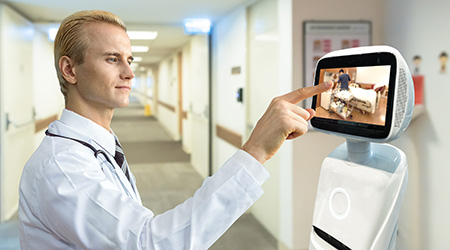While the use of robots in manufacturing has become commonplace over the last two decades, hospitals and other healthcare facilities also have started to embrace the benefits that robotic technology can provide. Robots now perform cleaning duties in healthcare facilities, deliver medications, and even perform routine security activities. While such advances add new capabilities to work and the workplace, they also introduce new workplace hazards for those who work with, and alongside them. The federal government is taking steps to ensure humans working alongside robots remain safe.
Recently, an alliance between the Occupational Safety and Health Administration (OSHA), the National Institute for Occupational Safety and Health and the Association for Advancing Automation updated and expanded a chapter in the OSHA Technical Manual on Industrial Robot Systems and Industrial Robot System Safety. The collective effort has made significant updates to the manual, including up-to-date technical information on the hazards associated with industrial and emergent robot applications, safety considerations for employers and workers, and risk assessments and risk reduction measures.
The manual serves to guide OSHA compliance officers as they perform inspections at facilities with robotic systems and provides a technical resource for safety and health professionals overseeing the use of robotic systems in workplaces.
“We value the efforts and expertise of the engineers at the Association for Advancing Automation and the researchers at NIOSH to enhance this important resource,” says Douglas Parker, assistant secretary of labor for occupational safety and health. “Robot use will continue to expand, and employers have a responsibility to assess the hazards these new applications may introduce and implement appropriate safety controls to protect the workers who operate and service them.”

 How Efficiency Checklists Help Hospitals Save Energy, Water and Money
How Efficiency Checklists Help Hospitals Save Energy, Water and Money Designing with Heart: Seen Health Center Blends Cultural Warmth and Clinical Care
Designing with Heart: Seen Health Center Blends Cultural Warmth and Clinical Care Rutgers Health and University Hospital Breaks Ground on Campus Expansion
Rutgers Health and University Hospital Breaks Ground on Campus Expansion What to Consider When Modernizing Healthcare Facilities
What to Consider When Modernizing Healthcare Facilities Corewell Health Beaumont Troy Hospital to Build New Tower
Corewell Health Beaumont Troy Hospital to Build New Tower